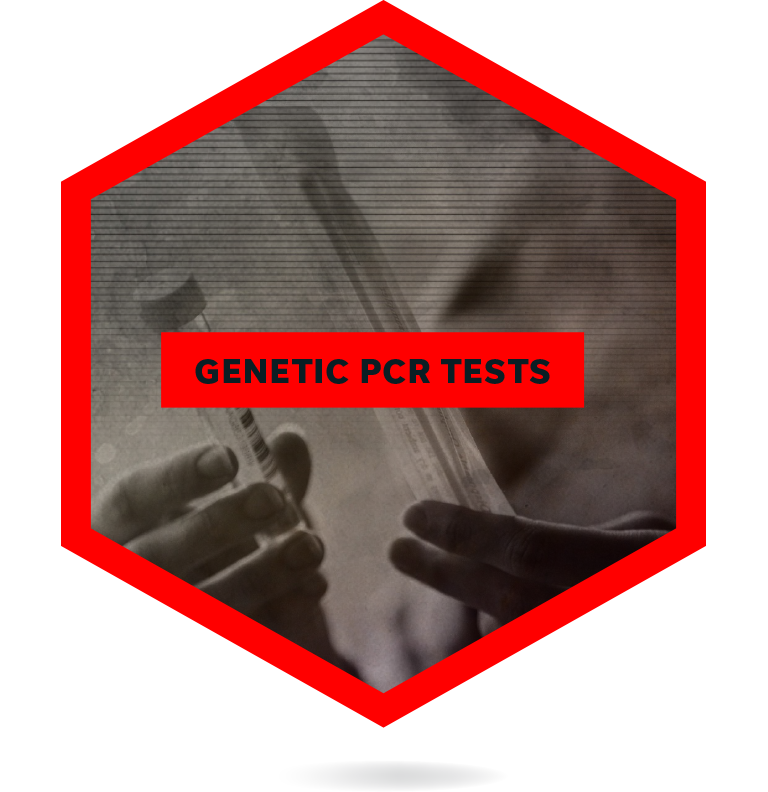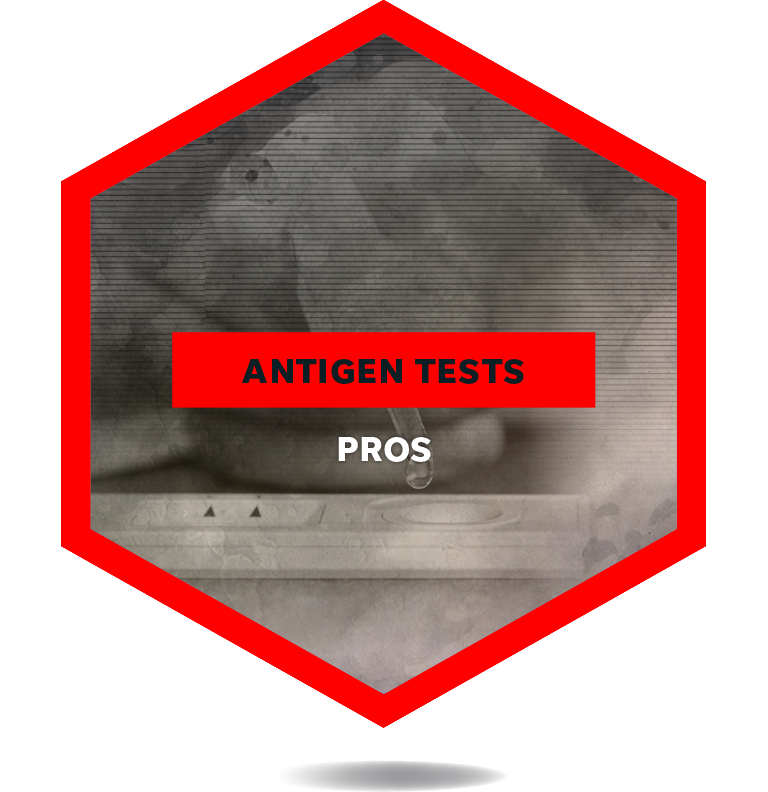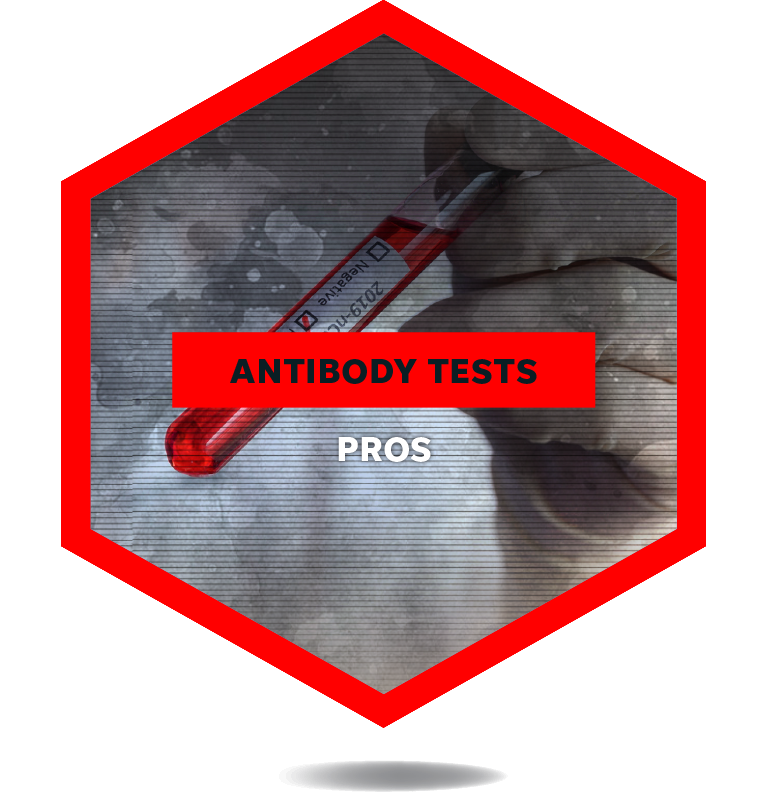COVID-19 testing: PCR tests versus antigen tests versus antibody tests
There are three different ways to test for COVID-19: PCR tests, antigen tests and antibody tests. Each method is best for a different stage of COVID-19 infection. Used in sequence, all three methods can help reduce the spread of the disease.
Our special report concerns one type of testing, a molecular method called polymerase chain reaction. Even though PCR is often called the “gold standard," it can be performed only in high-tech labs by trained scientists using specialized equipment. In some cases, this makes PCR testing too slow for a fast-moving pandemic.
Here we describe how each type of test works, and its benefits and disadvantages.
GENETIC PCR TESTS
A PCR test begins with either a nasal swab or a collection of saliva. The swab is placed inside a plastic tube containing a salt-based medium and shipped to a laboratory. At the lab, the sample is heated to 203 degrees, just shy of the boiling temperature for water. In a few seconds, this heat breaks the hydrogen bonds holding together the sample’s DNA. Short strips of DNA called “primers” are added to the reaction. When the reaction cools down, the primers stick to the sample DNA strand, marking the beginning and end of the base pairs that constitute COVID-19’s genetic sequence. As the solution is heated back up, an enzyme called a DNA polymerase bonds to the primers, then moves forward and back along the DNA strand, creating a perfect copy of the COVID-19 section. Again, heat is applied. Again, the DNA splits apart, primers tag the COVID-19 sections, and enzymes copy those sections. Each temperature cycle doubles the number of COVID-19 strands. Within hours, any COVID-19 present in the original DNA gets amplified billions of times. This makes it possible for lab scientists to know definitively whether a person has ever had COVID-19, even if the infection caused no symptoms or happened months ago.

PCR is sensitive. If you’ve ever had COVID, it’s likely that PCR will find it, even if you never hadsymptoms.
It’s reliable. In ideal conditions, PCR offers close to 100% sensitivity and specificity, which means patients have a very low chance of receiving a false positive or a false negative.
The test itself is fast. A large test machine can produce hundreds of results in a few hours.
PCR is sensitive. Because any COVID DNA is multiplied billions of times, even minor infections that occurred long ago can register as positive. This may cause people who aren’t ill or infectious to quarantine or seek treatment unnecessarily. One solution could be to report the test’s “cycle threshold,” or the number of amplification cycles required to find the virus. High CT values indicate a lower viral load; low CT values means the patient is more likely to be contagious. Test results are not set up to give qualitative answers like this, however. Instead, they give only binary positive/negative results.
PCR isn’t always so sensitive. In less-than-ideal conditions, average false-positive rates can climb to 20% (though false negatives remain rare).
PCR is fast. The PCR test pipeline is slow. Molecular tests must be performed by a relative handful of sophisticated laboratories. Getting samples to such labs, and returning the results, requires complex data and logistics systems that regularly bog down during COVID surges.
ANTIGEN TESTS
Rather than look for COVID-19's DNA, an antigen test finds proteins left behind by COVID-19. The nasal swab is placed in a medium that disrupts virus particles, exposing the proteins. Then several drops of the solution are added to a test strip, which resembles a pregnancy test. The test strip comes prepared with three strips of antibodies. Moving from left to right, the first strip contains antibodies colored by various agents, usually gold. The second strip, called the test line, contains monoclonal antibodies that the body uses to fight SARS-CoV-2. The final strip, called the control line, has polyclonal antibodies not found in COVID-19. If the sample contains COVID-19 proteins, it will bond with gold from the first strip. Then it will continue moving to the right until it binds to the antibodies on the test line. The line will turn from clear to red, indicating the presence of COVID-19. If this line remains clear, the test is negative for COVID-19. Finally, the mixture will flow to the right until it crosses the control line. If this line turns red, it means the test functioned properly. If the control line stays clear, the test was invalid. It should be thrown out, and the patient should be tested again.

Cheap. The Biden administration mailed 500 million antigen tests to American households beginning in January. Test kits by Abbott, iHealth and others can be purchased in pharmacies or online for about $10 apiece, though prices fluctuate.
Fast. Results in 20 minutes.
Reliable when used correctly. For people with COVID-19 symptoms, a positive antigen test result is correct 94% of the time, and a negative result is correct 91% of the time. Here’s the rule of thumb from Johns Hopkins epidemiologist Emily Gurley: If you’re sick, take an antigen test. “Particularly for someone who’s symptomatic, antigen tests should be sufficient,” Gurley said. “There are some concerns about false positives. But it would be very, very unlikely to have two false positive tests. If you’re not convinced by one, take another.”
Not cheap enough. Research suggests that for best results, the average active person should take an antigen test two or three times a week. For a family of four in the United States that would cost $120 per week, which many cannot afford.
Can be hard to find. Pharmacies and online retailers often run out of antigen tests, especially during COVID spikes, when tests are needed most.
Patients must be taught when to use them. For people without symptoms, antigen tests provide a true positive result only 34% of the time. A negative result is more reliable, proving accurate 92% of the time in asymptomatic people. Still, many researchers have described PCR tests as the gold standard, and antigen tests as “unreliable,” even though quick low-cost antigen tests perform better than PCR in some situations.
ANTIBODY TESTS
When attacked by a virus, the body’s white blood cells create antibodies that bind to virus cells and prevent them from replicating. The first type of antibody is immunoglobulin M, or IgM. It appears four to seven days after infection, but soon tapers off. The second type is Immunoglobulin G, or IgG, which shows up seven to 14 days after infection, and may linger for weeks, months or even years, depending on the person and the infection. Both types of antigen are discovered by taking a patient’s blood and testing it for IgM and IgG. This can be done in small batches using lateral flow test methods, similar to an antigen test, or in large batches using chemical luminescence, in which COVID-19 antibodies are bonded with enzymes that emit light. Performance varies widely by test manufacturer, but many antigen tests offer accurate results more than 98% of the time.

Good for public health. Because IgG antibodies remain in the body a long time, they provide a reliable historical measure to track the spread of COVID across the population, and across time.
Slow. A person in the early stages of COVID infection may have too few IgM antibodies to detect, or may be in the trough between IgM tailing off and IgG antibodies surging. Either way, antigen testing is not a reliable way to diagnose individual patients, or for patients to decide whether they need COVID treatment or quarantine.
Christopher Maag is a columnist for NorthJersey.com. To get unlimited access to his unique perspective on New Jersey’s most interesting people and experiences, please subscribe or activate your digital account today.
Email: maag@northjersey.com
Twitter: @Chris_Maag
This article originally appeared on USA TODAY: COVID test comparison: PCR vs. antigen vs. antibody

